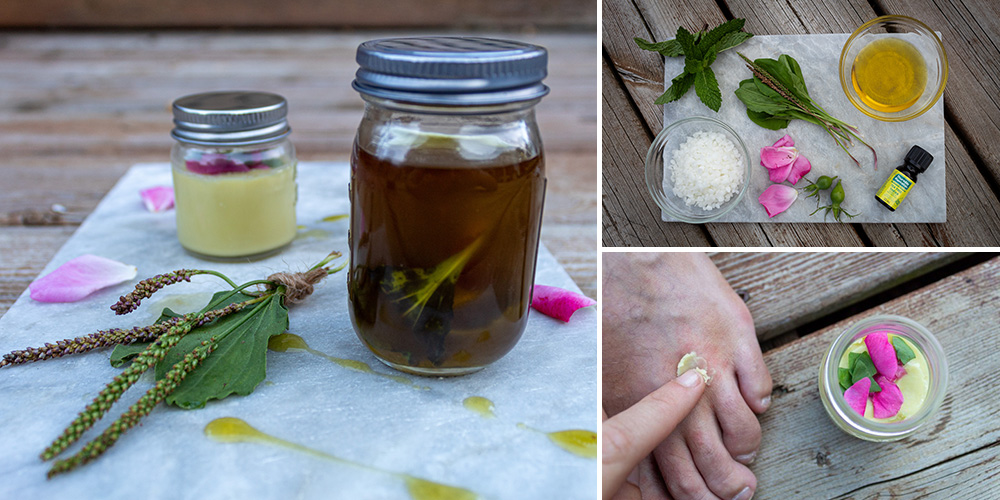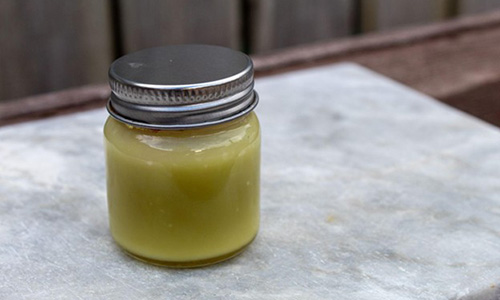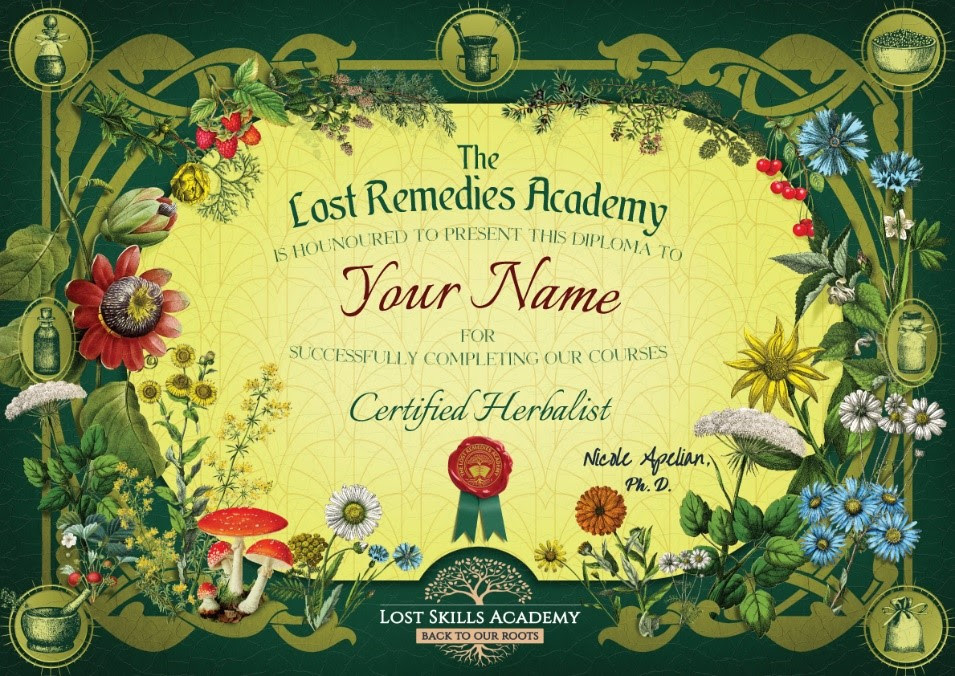
DIY Anti-Eczema Plantain Oil
So you’re just getting back from your dermatologist with another prescription? As did the previous reader. You’re probably wondering how long that prescription will work until you have to go back in to talk about your flare-ups if it works at all. We have all been there. Eczema affects the majority of us to varying degrees, at different ages, for multiple reasons, some of which are unknown, but we do know what eczema looks like and how it affects us.
There are seven types of eczema, and they all have one thing in common: irritated skin that can affect you at any point in life. Atopic dermatitis is a spontaneous bodily reaction that more frequently affects children but can appear at any age and is the most common form of eczema, causing dry, inflamed, itchy skin.
Contact dermatitis is an allergic reaction to external triggers such as hard water or clothing and chemicals in soap, shampoos, and other products. If inflamed eczema appears on the scalp, it is seborrheic dermatitis, and stasis dermatitis appears on the legs as discoloration.
Neurodermatitis forms small, itchy scales, dyshidrotic eczema causes dry burning rashes and blisters, and nummular eczema creates lesions.
There is nothing comfortable or glamorous about eczema, in fact, it’s quite the opposite, but there is relief without expensive doctor visits.
Think about it… how much are you spending on gas, doctor visits, and all those pills they load you up with? They won’t exactly tell you about their cozy deals with the pharmacy right around the corner.
Now, picture this instead: a small jar, a handful of plants you’d usually walk past without a second glance, and a simple glass of water. That’s all you need for natural, side-effect-free remedies at your fingertips! Easy, right? I just discovered this recently when a new book hit the shelves—it’s the perfect addition to my collection!
On page 231, I found a recipe for Honey Oat Soap that’s amazing for eczema and skin rashes. It’s been a game-changer for keeping my body clean without chemicals and avoiding fungus, eczema, and irritations.
Before pharmaceuticals and store-bought ointments, families would make their own medications for conditions such as eczema with the plants that grew around their homes. Among those plants was the highly medicinal broadleaf plantain, Plantago major.
What are the Health Benefits of Plantain Oil?
This magical plant, Plantago major, commonly grows in the front lawns of residential properties or at the roadside. Because plantain is considered a weed, it is unfortunately ripped out and tossed away when the property is cared for.
Now, you need to be aware that some roadsides, public parks, and other places may be harmful for harvesting. They are often sprayed with chemicals. Only harvest in areas you know have not been sprayed. This way you’ll be chemical-free.
Honestly, the only way to make sure your herbs are clean and free from hidden toxins is to grow them yourself. I know that might sound overwhelming at first, especially if you don’t have a backyard. Don’t worry—I don’t have one either!
Instead, I use pots to plant seeds, and they’ve been a lifesaver for making remedies that help my body heal. The only place I’d recommend for top-quality seeds is the Medicinal Garden Kit. It’s a great way to save a ton on pills and grow your own healing remedies. Here’s the link—I can’t wait to start planting!
Broadleaf plantain is not a weed it is medicine (along with other plants considered weeds). If you are affected by skin irritation or eczema, keep your eyes open for its broad leaves and tall stalks while outside, amongst green grasses.
Inflamed skin produced by eczema can benefit from the polyphenols found in the plantain’s leaves. When crushed leaves are applied to the skin, the polyphenols and other chemicals that protect the plant when damaged work to protect your skin as well by penetrating the surface irritation and acting as a calming agent. Rose hips are rich in polyphenols and have proven to work as an anti-inflammatory, as well.
Damaged and wounded skin also benefit from these polyphenols found in both plantain and roses. They are responsible for the antimicrobial and wound healing properties that work hard to keep your skin free of infections and to provide a quick and proper healing process. Tea tree oil is a miraculous antimicrobial and helps lengthen shelf life (which is why it’s in this recipe).
The chemical compounds found in the ingredients that help soothe skin conditions such as eczema are more than just the polyphenols it’s also the polysaccharides, flavonoids, terpenes, and iridoid glycosides, together they battle inflammation and heal wounds (and so much more).
As you can tell, the many medicinal properties of broadleaf plantain make it an effective choice for eczema management. Here is a broadleaf plantain recipe for your eczema that is tried and true while easy to use!
Usnea and its Antifungal Actions
There’s good news: usnea, a natural remedy often called “old man’s beard,” can help you take control. Packed with a powerful antifungal and antibacterial compound called usnic acid, usnea works by breaking down bacterial cell walls, stopping their growth, and supporting your immune system to fight back. Whether it’s a topical skin issue or a systemic fungal infection, a usnea tincture is a must-have in your arsenal.
If you want to harvest usnea yourself, make sure to do it responsibly to protect this slow-growing lichen. Look for usnea on fallen branches after storms rather than pulling it from living trees to avoid harming the environment.
Always check for its stretchy white core to correctly identify it and avoid confusing it with similar lichens. Since usnea absorbs toxins from its surroundings, only gather it from clean, unpolluted areas to ensure it’s safe and effective.
Once you’ve collected your usnea, dry it thoroughly before using it. To make a tincture, use high-proof alcohol to extract its active compounds most effectively.
If you want to skip this long and time-consuming process and you’d rather get a ready-made spray, this is the only trusted source I recommend sourcing it from. After many unsatisfying attempts from multiple suppliers, I finally found the best apothecary here.
Why wait for the problem to worsen when you can tackle it head-on with a proven natural solution? Don’t let a simple infection turn into a bigger issue—usnea has your back. Once you cleaned your precious skin, let’s see what you should apply toppically.
How to Use Anti-Eczema Plantain Oil
 This anti-eczema plantain oil recipe comes with a bonus salve recipe for you to make with your oil if you choose to do so. The plantain oil and the salve can be used as a topical relief daily, as part of your regular eczema management routine. Use these remedies during flare-ups, as well.
This anti-eczema plantain oil recipe comes with a bonus salve recipe for you to make with your oil if you choose to do so. The plantain oil and the salve can be used as a topical relief daily, as part of your regular eczema management routine. Use these remedies during flare-ups, as well.
Use your fingers to gently apply the oil or salve to your affected areas, carefully spreading to cover the entire site. The plantain oil can also be ingested for a more reliable approach to alleviating eczema long term, adding it to a salad or using it as a dip is perfect.
Harvest your ingredients in the morning and start this recipe early in the day. Harvesting may take a while, but preparing the oil before heating takes as little as 2-10 minutes.
The heating time is the majority of the day, taking anywhere from 2-6 hours; the more volatile and woody the plants are, and for a more potent result, the longer it takes.
Making plantain oil requires a few things, including a 500ml canning jar, a medium-sized pot, and a silicone or wire trivet for double boiling. You will also need a 250ml canning jar for the plantain oil remedy and a 100ml canning jar or tin for the optional plantain salve remedy.
Anti-Eczema Plantain Oil (and Salve) Recipe
 Ingredients
Ingredients
- 1 cup plantain leaves
- ¼ cup peppermint leaves
- 5 rose petals
- 2 rose hips
- 1 cup of olive oil
- 10 drops of tea tree oil
- 2 tablespoons beeswax (optional)
Note: If you would like to make the salve, be sure to melt the beeswax before adding it to the oil.
Instructions
- Pack the plantain leaves, peppermint leaves and rose petals to a glass mason/canning jar, leaving roughly 1-2 inches of space at the top. Crush the rosehips and mix those into the glass jar as well. Optional: leave 2 plantain leaves and 4 rose petals aside for the final product.

- Add olive oil to the jar, enough to cover the plant ingredients completely, to roughly 1 inch from the brim.

- Put the glass jar(s) on a silicone or wire trivet in a pot, add enough water to the pot to meet the middle of the glass jar. Lid the glass jar.
- Heat on low for 2-6 hours (longer for woody, volatile plants and for a stronger potency) adding water whenever necessary to maintain the level.

- Remove the jar from the pot of water and add the tea tree oil to the plantain oil.
- Put the lid on and set aside to cool, OR move on to the optional steps for salve.
- After the plantain oil has cooled down enough to handle, you can now pour it into the final container to be used for application. If you saved plantain and petals, you can add them to the container before pouring the oil in.
- Your plantain oil is now ready for healing!

Optional Steps for Salve
- You’ve finished step 5, now, using some of the oil while it’s hot, fill half of your salve container with plantain oil, straining the plant matter as you pour, ensuring none enters the salve container.
- In the salve container, lightly stir the melted beeswax into the oil while it’s hot, adding the beeswax slowly. Add enough to fill to just under the brim. Feel free to fancy it up with a rose petal on top.

- Set aside to cool and harden for a few hours.
- Once cool, your salve is ready to use!

If making remedies at home isn’t an option for you, don’t worry—you can still enjoy the benefits with a convenient All Purpose Salve.
This ready-made salve is perfect for soothing irritated skin, especially eczema and rashes, where it works to moisturize and calm the skin with its natural healing properties. Beyond that, the All Purpose Salve is a fantastic, natural alternative to chemical-laden creams that can often irritate sensitive skin.
Whether you’re dealing with dry patches, minor cuts, or everyday skin irritations, this salve is a gentle, skin-friendly solution you’ll feel great about using. You can get it from here.
*Now, something I can’t stress enough is using natural care products. Most soaps you buy from your daily store are filled with chemicals and harmful-for-skin compounds. Don’t trust me? Just read the ingredients of the ones you are using right now.
Number one go-to herb to clean your nails, or any wounds really, is Usnea. It has powerful antibiotic, antifungal, antimicrobial, and antiviral properties. You can spray it on your eczema and see how it cleanses any fungi or bacteria away.











You can’t use fresh herbs in an oil…never mind covering it to keep the water from the plant material evaporating!!! If you don’t know what you’re talking about….please refrain from passing along info that can harm people!!! This is a perfect place for mold and bacteria to thrive!!!
The tea tree oil and Olive oil will take care of mould and bacteria if the salve is used within 6 months to one year. I would also add some Mauka honey to the mixture for the same purpose. Some people like myself with very sensitive skin will react to Tea Tree oil so I would use Manuka instead.
Peter
Hi, I was wondering if I could use dried plantain -I wonder if the same measure